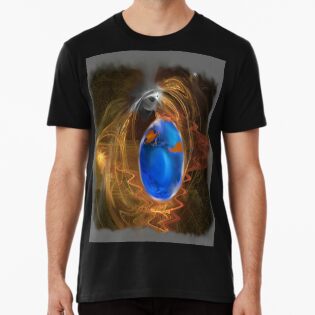

I don't accept Locke's concept of a tabula rasa because, like Kant, I believe that our minds are imposing structures on the world in order to make experience possible at all. But how can the world as we experience it be real given our a priori structure? If we are engaged in making sense of the world by imposing our a priori structure on it (''falsifying'' the world, as Nietzsche puts it), it seems to follow that the world as we experience it and the world as it is cannot be one and the same thing. The only way I can understand Hegel here is if he asserts that the world as we experience it really is the ''real'' world. How, then, did Hegel account for experience at all? If things-in-themselves are removed then it seems that our experience has no source. Hegel rejected Kant's concept of things-in-themselves. Although we cannot say anything about things-in-themselves, it seems to Kant that they must exist since there must be something to which we apply our a priori structure to (As an aside, I do not think that Kant was right in asserting the existence of things-in-themselves given that they are, by definition, that which is independent of experience at best, I think one can only assume the existence of things-in-themselves.) As such, things-in-themselves are unknowable we can say of them that they exist but we cannot say anything about them, since we cannot conceive of anything outside of our a priori structure. In other words, things-in-themselves are the world independent of (our) experience. Things-in-themselves are the source of our experience they are what things are like before we apply our a priori structure to them. According to Kant, knowledge does not conform to objects but objects conform to knowledge, to our a priori structure. The confrontation between King Mark and Tristan at the end of Act II encapsulates "many of the key issues of Schopenhauer's philosophy (the essentially tragic nature of existence, the futility of the question "Why," compassion as the basis of morality, the "Grund (reason or cause) " of existence, the limits of what can be experienced, and the impossibility of knowledge concerning the metaphysical noumenon)." (Chafe, 47) Since noumenon cannot cause the phenomenon, King Mark's search for the ultimate causality, the "why" of existence, is in vain.Kant distinguished between the world as we experience it ( phenomena) and the world as thing-in-itself ( noumena). Recognizing the omnipresent character of the will is as close as one can come to knowledge of the world "an sich."Įric Chafe describes the Schopenhauerian progression in Tristan: For Schopenhauer this might be accomplished by denial of insatiable desire and the will-to-life. There are ways to approach the noumenon from the external world, or even to transcend it one can think of a black hole as a door to another world.

In fact, the boundary between the phenomenal and noumenal realms itself is somewhat gray. These binary polarities are not inevitably of the either/or variety or the plus/minus of modern parlance.

something beyond, to mention a few of the oppositions. unconscious, even conventional musical form vs. This distinction between phenomenal and noumenal lies at the heart of Wagner's Tristan and Isolde – appearance vs. According to Schopenhauer, phenomenon and noumenon are the same reality apprehended in two different ways: the noumenon is the inner significance, the true but hidden and inaccessible essence, of what we perceive outwardly as the phenomenal world. The noumenal realm (a single, undifferentiated entity – thing-in-itself – that is spaceless, timeless, non-material, beyond the reach of causality) is inaccessible to experience.

The phenomenal realm is the highly differentiated, external world of material objects as humans experience it with their senses, in other words a representation of the mind in which space, time and causality define the perceptions. Total reality = phenomenal realm + noumenal realm.


 0 kommentar(er)
0 kommentar(er)
